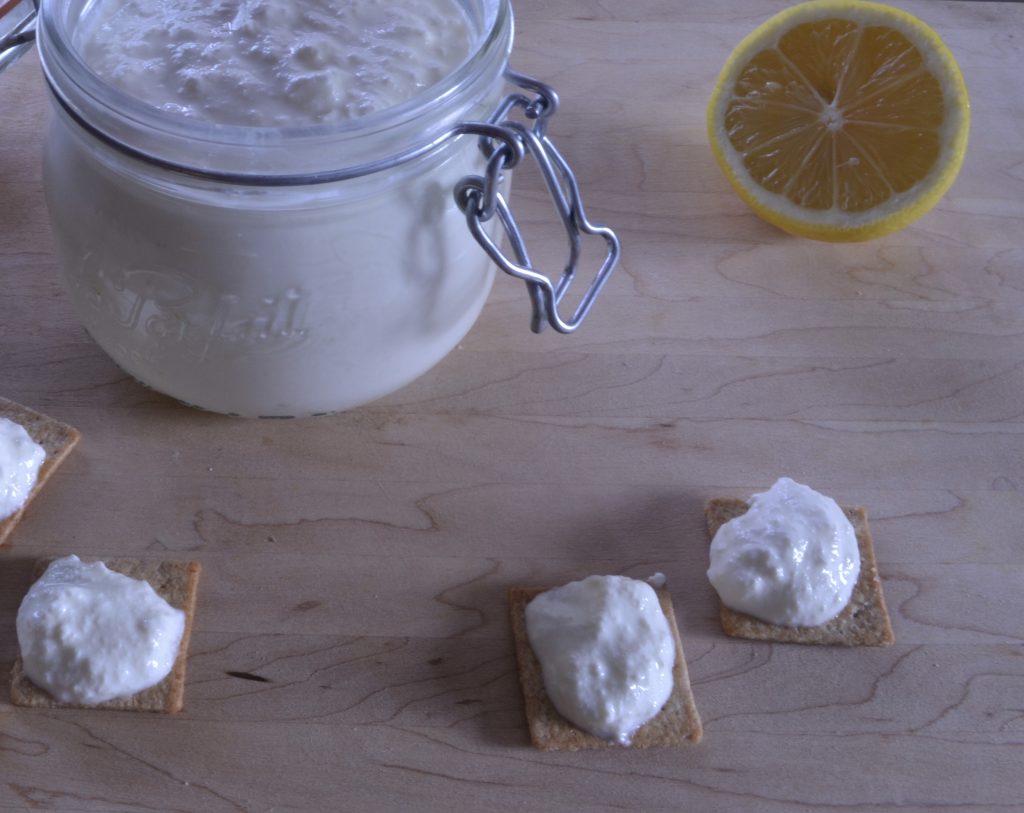When you think about how fresh and creamy good ricotta cheese tastes, it’s hard to believe that the word ricotta actually means re-cooked. Traditional ricotta cheese is a secondary product made from sweet whey, which is produced when making other cheeses. But if you’re not a full-time cheese-maker, you probably don’t have access to large quantities of fresh whey. That’s okay, because it’s simple to turn four ingredients that are probably in your kitchen right now into a sweet, creamy ricotta that is both rich and delicate at the same time, like a fine champagne. When I make it in my open galley kitchen, my living room soon smells like a bowl of fresh cream.
Ricotta Cheese
Ingredients
- 2 quarts whole milk
- 1 c. heavy cream
- 1/2 tsp salt
- juice of one lemon, freshly squeezed approx. 1/4 c.
Instructions
-
Blend milk, cream, and salt in lg heavy pot. Bring to boil over med. heat, stirring occasionally to prevent scalding, approx. 10 min.
-
As soon as mixture boils, reduce heat to low. Stir in lemon juice. (The citric acid is what causes the cheese to curdle, so don't skimp here.)
-
Stir occasionally until mixture curdles, approx. 5-6 min.
-
Pour mixture into colander lined with cheesecloth over lg bowl in sink. Let drain until ricotta thickens to your desired consistency, approx. 1-2 hrs. (If drier ricotta is needed, you can continue to drain it in the refrigerator.)
-
Transfer ricotta to airtight container(s) and refrigerate until ready to use; it should keep 2-3 days. Discard whey or reserve for another use.
This post contains affiliate links. For more information, click here.
My favorite tools for making ricotta:
Buon appetito!
A Note on Whey
Whey is the liquid that drains from cheese as it firms up. There are two types of whey: sweet and acid. While traditional ricotta is made from sweet whey, the whey that it produces is acid. That means it has more limited uses, but there are a few. For example, it can be used as a substitute for buttermilk in recipes, as a soil additive for acid-loving plants, or as a skin softener, applied with a cotton ball or added to your bath water. It doesn’t keep well though, so use it up in a day or two.
Looking for help with meal planning? You might like Prepear, a free app where you can find and save recipes, store meal plans, and automatically create grocery lists.
Do you love trying new foods? You might enjoy:
- Boston, Massachusetts
- Burlington, Vermont
- Honolulu, Hawaii
- Newport, Rhode Island
- Rehoboth Beach, Delaware
After my misspent youth as a wage worker, I’m having so much more fun as a blogger, helping other discerning travellers plan fun and fascinating journeys. Read more …

